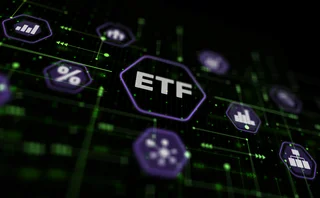Latency special report

Click here to download the PDF
Speed Is Nothing Without Control
Since trading firms first realized there was an advantage to be gained by being able to capture market data and trade faster than their rivals, an arms race has been underway to see who could engineer the fastest and most efficient trading infrastructure with as little latency as possible.
First, firms turned to direct datafeeds, captured using low-latency ticker plants, encouraging exchanges to distribute their feeds even faster. Then firms implemented low-latency messaging layers to distribute that fast data throughout their organizations, which in turn placed pressure on vendors to streamline their technology and eliminate even the slightest trace of latency. This turned the industry's attention to hardware-based technologies that function faster than software, and eliminating network layers altogether by moving trading servers into proximity hosting datacenters close to exchanges, and ultimately into the same facilities as exchange matching engines, spawning a wave of megadatecenters, such as those being built by NYSE Euronext, CME Group and the Singapore Exchange.
But as low latency becomes ever-more important, it also becomes harder to achieve. Saving milliseconds a few years ago was easier than saving microseconds or nanoseconds today, and firms are using sophisticated timestamping and measurement tools to monitor latency at the most granular level possible-in some cases, allowing them to generate microsecond improvements overall by eking out nanoseconds here and there. In addition, firms looking for end-to-end views of latency are also demanding transparency into the delays introduced by links in the chain outside of their control, such as trading venues themselves, prompting exchanges to roll out their own latency monitoring solutions, to provide members with statistics such as order-to-trade and tradeto- tape latency, and where a firm's overall roundtrip latency stands in relation to its peers.
Simply put, those who can't measure their performance can't perform, and will have to look elsewhere for trading advantage. But how long can it be before latency is exhausted as a competitive differentiator? Ultimately, this arms race is limited by light speed and the laws of physics. And perhaps in turn, those firms that can't compete on latency will have the upper hand when the rest of the industry gives up battling over picoseconds and femtoseconds. But according to the participants in this report, there's still a long way to go before we need to worry about that.
Only users who have a paid subscription or are part of a corporate subscription are able to print or copy content.
To access these options, along with all other subscription benefits, please contact info@waterstechnology.com or view our subscription options here: http://subscriptions.waterstechnology.com/subscribe
You are currently unable to print this content. Please contact info@waterstechnology.com to find out more.
You are currently unable to copy this content. Please contact info@waterstechnology.com to find out more.
Copyright Infopro Digital Limited. All rights reserved.
You may share this content using our article tools. Printing this content is for the sole use of the Authorised User (named subscriber), as outlined in our terms and conditions - https://www.infopro-insight.com/terms-conditions/insight-subscriptions/
If you would like to purchase additional rights please email info@waterstechnology.com
Copyright Infopro Digital Limited. All rights reserved.
You may share this content using our article tools. Copying this content is for the sole use of the Authorised User (named subscriber), as outlined in our terms and conditions - https://www.infopro-insight.com/terms-conditions/insight-subscriptions/
If you would like to purchase additional rights please email info@waterstechnology.com
More on Trading Tech
Symphony boosts Cloud9 voice offerings with AI
The messaging and collaboration platform builds on Cloud9’s capabilities as it embraces the AI wave in what CEO Brad Levy calls “incremental” steps.
Can exchanges leverage new tech to claw back ETF share from RFQ platforms?
Systematic trading strategies and proliferating data are bringing efficiency to an otherwise-fragmented European ETF market.
Nasdaq reshuffles tech divisions post-Adenza
Adenza is now fully integrated into the exchange operator’s ecosystem, bringing opportunities for new business and a fresh perspective on how fintech fits into its strategy.
Liquidnet sees electronic future for gray bond trading
TP Icap’s gray market bond trading unit has more than doubled transactions in the first quarter of 2024.
This Week: HKEx's new derivatives platform; GoldenSource; Quonian-SimCorp, and more
A summary of some of the latest financial technology news.
Chris Edmonds takes the reins at ICE Fixed Income and Data Services
Edmonds is now leading ICE’s fixed income and data business as the rush to provide better data and analytics in fixed income builds.
Systematic tools gain favor in fixed income
Automation is enabling systematic strategies in fixed income that were previously reserved for equities trading. The tech gap between the two may be closing, but differences remain.
Waters Wrap: Examining the changing EMS landscape
After LSEG’s decision to sunset Redi, Anthony examines what might lie ahead for the EMS space.
Most read
- Chris Edmonds takes the reins at ICE Fixed Income and Data Services
- Deutsche Börse democratizes data with Marketplace offering
- Waters Wavelength Podcast: Broadridge’s Joseph Lo on GPTs








